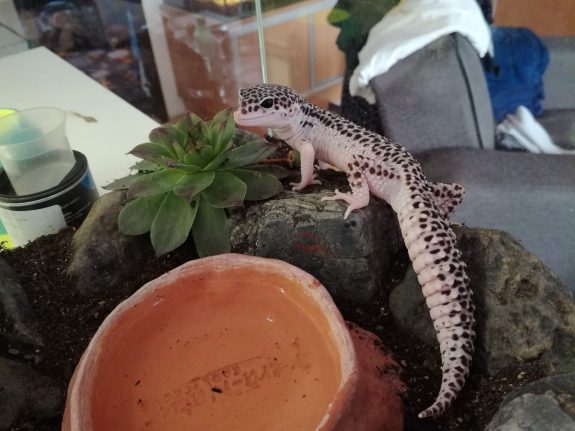
Gecko breeders spend a lot of time discussing various “morphs” of those gecko species for whom breeders have developed different patterns and colors. To the best of my knowledge, there is no formal, universally accepted definition of what exactly is a “morph”.
This conversation between Aliza, the Gecko Time editor and Miroslav Baborak, a gecko breeder from Prague, evolved from a discussion about leopard gecko morphs on a popular gecko forum. We decided to continue the discussion privately and to reproduce it on Gecko Time. (Although Aliza is listed as the author, the article was a true collaboration between us). We would love to receive your additional comments about this topic and your ideas about how we should define a morph.
Aliza: [this gecko on the forum] looks like a jungle to me and possibly Mack snow since at least in the picture it’s black and white instead of black and yellow.
Miroslav: Jungle is not a morph, just a, let’s say, variety of one.
Aliza: How do you define “morph”?
Miroslav: I don’t consider jungle, reverse stripe, patternless, bold stripe etc. to be morphs. It’s just a variation of one. Morphs are mack snow, albinos, blizzard, raptor, enigma, creamsicle, stealth etc.
If a mack snow is a jungle or bold stripe, that doesn’t make it anything else: it’s still a mack snow. Same with, for example, giant reverse stripe Tremper albino het eclipse. What I would consider this leopard gecko to be is basically a Tremper albino het eclipse (not so fancy, I know).
I appreciate it when you tell people that their gecko is for example high yellow carrot tail (and I’m sure they appreciate it as well, because they think they have something really special). But that is not a morph. Some of these geckos are usually a mix of albinos with something, nothing specific (and I know that you know that). I think that it would be better to tell them this, because otherwise this mixing of albino traits, for example, won’t stop and we will end up with a market full of worthless hybrids.
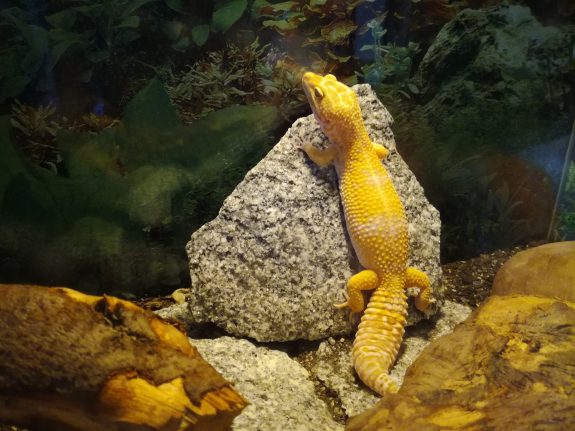
Aliza: Very interesting. I do think that the term “morph” hasn’t been universally defined. It does seem as if you feel most comfortable defining morph in terms of traits that are clearly dominant, recessive or co-dominant and less comfortable labelling polygenetic traits as morphs (just my interpretation). We may have to agree to disagree about that. I agree that any gecko with unknown genetics can have hidden recessive genes such as albino that we know nothing about and I agree that it is not a good idea to breed them, but I’m not sure why it could be a problem to tell someone they have a “high yellow carrot tail”. Did you mean, perhaps, that if I label someone’s gecko they will assume that they can now breed it because they know what it is, and that increases the danger of mixing albino strains or passing along other unknown traits?
The albino trait was just an example. Of course, the high yellow carrot tail doesn’t necessarily have to have the albino gene, it’s just the last thing I remember from the forums that was discussed and seemed like a mongrel with resemblance to nothing but wild type – it can have almost any gene. But I’m especially talking about geckos where you have no idea what kind of albino it is. I’m saying that not only should this gecko not be bred, it should not exist in the first place. I don’t mean to sound like a fascist here, but some “purity” should be preserved.
Miroslav: I’m basically talking about two things here:
A. Not thinking about the outcome of breeding: When people breed geckos, they should at least know what the outcome of breeding two geckos can be. There is no point of breeding geckos when you end up only with normal/wild types with numerous hets.
B. Mixing of albinos: People should also know that breeding different albinos is just stupid. They breed them, sell them and then we have hundreds of people on forums, asking what this gecko is. I don’t know and the guy who sold you the gecko probably doesn’t know either.

First of all, it messes up the work of many professional breeders. Second, it raises up prices of more “pure” geckos. When you have nothing but these mongrels on the market and then there is a breeder who actually cares about the morphs, it skyrockets the prices, because they have something incredibly luxurious.
It’s just that lots of us are trying to make something nice, breeding just our best geckos and then here comes Johnny and mixes up Bell het eclipse and Tremper het blizzard and ends up with a bunch of High yellow carrot tails with hets to Bell, Tremper etc. Timmy buys the mongrel, comes to a forum and you tell him it’s a “high yellow carrot tail”. “Oh, that sounds awesome”, says Timmy. Goes and buys another one and starts breeding more mongrels.
My point is, that we probably shouldn’t give a pointless mix of something a fancy name, because soon it would be hard to find a gecko with (like you said) clearly dominant, co-dominant or recessive traits, or better – not just wild types, mack snows and a mix of who even knows what.
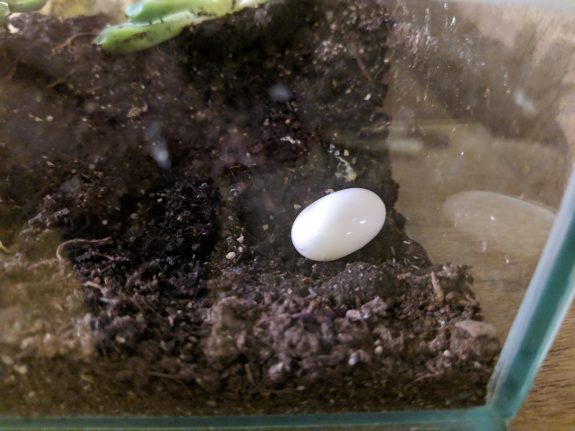
Aliza: I’ll get back to the issue of mongrelization later. For now, I have two questions about things we’ve already discussed: First, it seems as if you think that the giant trait is also not a true morph (“for example giant reverse stripe tremper albino het eclipse. What I would consider this leopard gecko to be is basically a tremper albino het eclipse”). My understanding is that giant is co-dominant: one copy is a giant and two copies a supergiant. Do you agree or do you see it differently?
Second, I’m still wondering about the idea that polygenetic traits aren’t morphs. Consider the case where someone has been working with a breeding colony for many generations. The original geckos were wild type with somewhat reduced spotting and had proved out to have no hidden hets. Over the course of many generations, the least spotty and most orange colored geckos were bred together resulting in a generation of very orange super hypo geckos. In this case, is it a morph (super hypo tangerine)? Is it just a normal that has a nice look? Is it possible that it could be a morph but we wouldn’t want to call it that so we don’t encourage other people with orange super hypo geckos to think they also have the same morph?
Miroslav: I think that for something to be called a morph, it has to be visibly distinct from another gecko. Breeders proved that the giant trait is actually co-dominant, that’s true. It’s very debatable though. A Giant isn’t really visibly distinct from another gecko. There are lots of geckos bigger than the “Giant” geckos even without having the giant gene. A Super Giant is usually visibly much bigger than “ordinary” gecko, still, you have to know the genetics of the parents to be absolutely sure. I used to have a 114g female Tremper Albino and as far as I know, she didn’t have the giant gene.
If you pair together two specific geckos and you know what the outcome will be, then I would say that you are trying to attain a gecko of a certain morph. Making a gecko more orange over generations doesn’t make it a morph, because then you breed the gecko to another one which isn’t as orange and you end up where you began and it takes many generations to get there again.
Breeding any two geckos together doesn’t automatically make the outcome (to certain degree) a unique morph. It’s like breeding a husky with a labrador retriever and calling the puppies “giant super hypo fluffy tail”. If you can’t tell what it is, it’s not a morph, it’s something that defiles the bloodline and should not be sold. I understand, it’s still an animal that deserves a normal life, including a limited breeding if you are interested in that, but please, don’t sell the outcome.
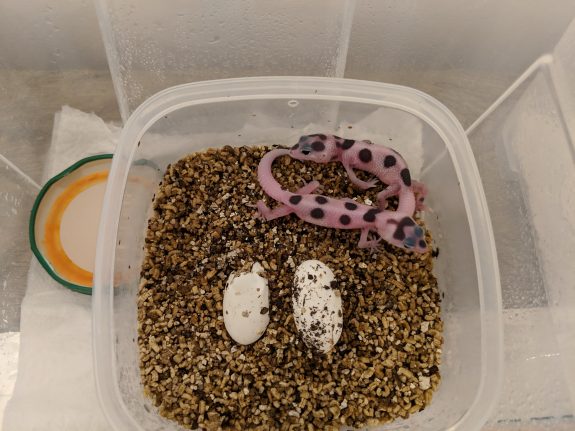
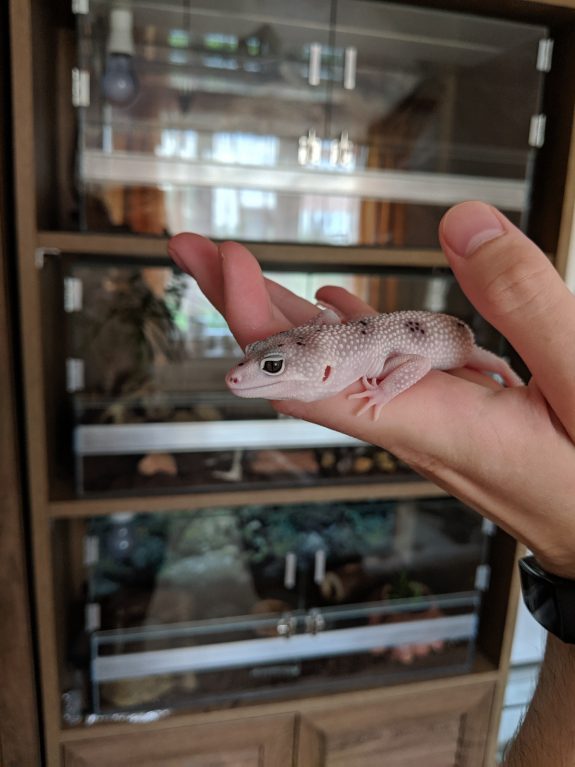
Aliza: So, if I understand what you’re saying, you have a pretty narrow definition of a morph: a gecko whose traits are visually distinctive and whose traits derive from a dominant, recessive or co-dominant gene. That would include Mack Snow, Tremper Albino and Blizzard, for example, and exclude giant and stripe. You may choose to use those terms to further describe a morph (e.g. “striped Mack snow”) but the stripe part wouldn’t be part of the morph. Do I have that right?
Miroslav: Not only Mack Snow, Tremper Albino etc. These I would consider to be basic morphs. But combinations of these are totally legit as well, for example BEE (Eclipse Enigma) and Cyclone (Las Vegas Albino, Murphy Patternless and Eclipse). In short, if you can (almost) immediately tell what combination of morphs it is and know what it is called, then fine. If you say “I would call this a high yellow”, well, you can call it whatever you want, but it wouldn’t make it anything else than it is – normal/wild type. I’m sure that “High yellow wild type” sounds really cool, but it’s still just the cheapest and most common gecko out there.
Aliza: Let’s move on to the mongrel issue: producing geckos that aren’t true “morphs” according to your definition. I feel that there are 2 different categories of these: One is where the gecko’s genetics are known, but you wouldn’t consider it a morph (like a “stripe” with no albino or other hets which I guess you’d consider to be a wild type gecko who happens to have a stripe pattern, right?).
The other is where the gecko has an unknown genetic history which may include unknown hets. So the first question is, do you distinguish between these two types in terms of whether you feel they should be produced and/or purchased by a prospective breeder?
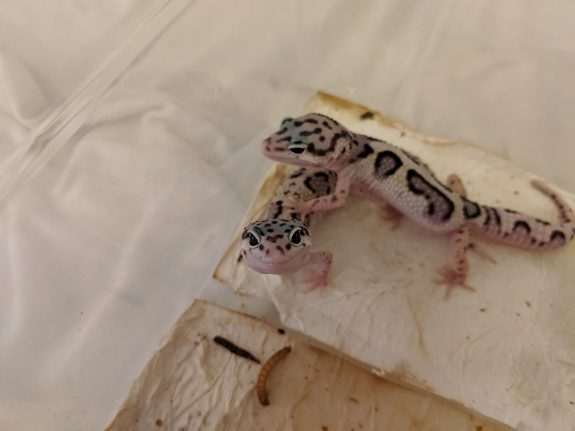
Miroslav: My point is that the genetics in the first case usually aren’t known at all. When someone comes to a gecko forum and asks: “What is my gecko?”, you can be just guessing. “I would call this” is not really convincing. The second case – if you don’t know just the hets, it’s not ideal, but if you at least know what morph your gecko is, that I would consider it OK if you tell the buyer about it and he/she is ok with it.
At the moment I’m breeding one male with partially unknown genetics. But at least I can clearly tell he is a super snow. There is that adrenalin element when you don’t accurately know what will hatch. But I still know the complete genetics of the female which is a “Giant” Mack Snow Enigma het Raptor”. I know I will produce some Mack Snows, some Mack Snow Enigmas, some Super Snows. If the male is het for Tremper, I will have some Trempers, if the male is het for Eclipse, I will have some Black Holes and Mack Snow Eclipses. If I was to get some “Hypo Baldy Abberant Something” I would rather not breed them. I would never breed two geckos of totally unknown genetics or some that, let’s say, are genetically poor – like Wild Type het Tremper x Mack Snow het Blizzard. The market is just flooded with these. The problem is that people simply don’t know this, they do it just for fun and the joy of breeding. I understand that, but these aren’t fish, these are animals that live for decades.
It really depends on the goal of the breeder. If you want to make a quick buck, I guess you can just make as many geckos as possible, completely ignoring any genetics. Then you sell them to pet shops, they sell them for twice as much to people who ask in the better case what their gecko is. In the worst case, they ask why is their gecko dying and it’s usually crypto from terrible conditions in pet shops. In my country it’s actually illegal to breed dogs and cats in bad conditions on big scale for commercial reasons. I feel like the situation is similar with geckos.
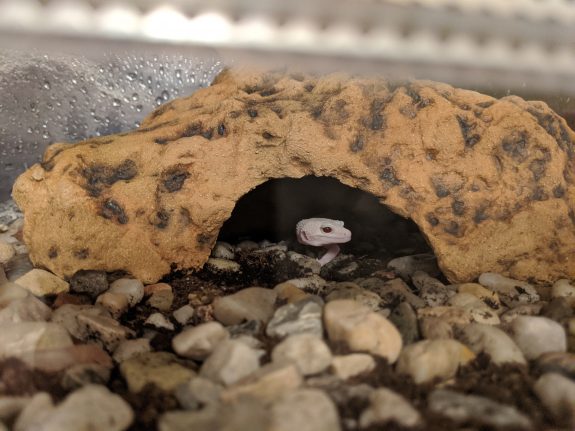
Aliza: It sounds as if you’re not so concerned about breeding geckos with unknown hets if you can visually assign them a morph according to your definition (like you breeding your super snow even though you’re not 100% sure of its genetic history). However, you don’t like the idea of breeding geckos that are not visually a morph according to your definition. So, a giant hypo tangerine, since it doesn’t qualify as a morph according to your definition is not a good candidate for breeding. Do I have that right? If so, I think we’ll have to just agree to disagree.
Here’s an issue that I think we both agree about: It’s not good for the hobby for people to just pick 2 geckos at random, where they have no idea of their genetics and breed them to produce all sorts of geckos with unknown hets. One of the worst problems is when a gecko is het for 2 different strains of albino. We agree about this, right?
Miroslav: Yes, we do. The fact that you should not breed two different strains of albino should be one of the basic principles of breeding leopard geckos.
Aliza: Besides the fact that this results in a lot of geckos out in the world that are genetic mongrels, all these geckos sell pretty cheaply and end up pulling down the prices of even the true morphs.
Miroslav: Yes, I’ve already mentioned that before. When you want to sell your geckos that you worked hard with to make them “pure” and the table next to you sells their mongrels for 75% less, guess what a regular person would buy. I’m not saying it’s a bad choice for a regular person. The problem comes when the person breeds them. The process of mongrelization of the market then continues.
Aliza: What can we do? We can’t force people to stop breeding these geckos. One idea I have is to try to get everyone to recognize 2 different “types” of geckos for sale: “pet quality” and “breeder quality”. Obviously, the “breeder quality” would have known genetics and the pet quality wouldn’t. If everyone used the same language, it’s possible that there could be 2 tiers of geckos and we could start educating prospective breeders to get their stock from the “breeder quality” geckos. What do you think of this?
Miroslav: Most of the breeders who sell mongrels will never agree to this labeling. Why would they? It would just hurt their business. Nobody wants his merchandise to be labeled as a worse type of gecko.
To summarise this, I think people should not:
a) Pick two random geckos and breed them
b) Breed different strains of albinos together
c) Breed more and more common morphs – e.g. wild types
d) Call the outcome of the above fancy names, because then people could think they have something special (and legitimate to be bred) and start to breed them
Aliza: Then I guess the only way to deal with this is to keep trying to educate potential breeders that they should only choose geckos whose genetics are known.
Gecko Time would really like to know what you readers think about morph definition and breeding geckos with unknown genetics. Please respond in the “Comments” section.
Miroslav Baborak lives in Prague in the Czech Republic. He says: I can be barely called a professional breeder, it’s just a hobby for me. I’ve been keeping leopard geckos for about six years and I’ve been breeding them for about two. I sell geckos only to cover the cost of raising them. That being said I don’t care about the costs – I feed them dubia roaches and crickets (sometimes mealworms for variety) and use the best reptile vitamins. I keep my adult geckos in 20 gal. tanks. I don’t like seeing them in small tubes which is something we can see big breeders doing.Last season I hatched mostly Mack snow Enigmas and for the next season I’m planning some Embers, Raptors and Snowflakes.
[ed. note: all pictures are from Miroslav Baborak’s gecko collection]


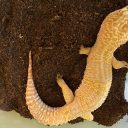
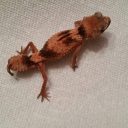
A morph is just a variant form and has little do to with genetics. Biology, in fact, separates phenotype (observable characteristics from genes and environment) from genotype (the genes carried).
Going by that standard, anything the appears different is a morph. I would say that in reptiles, we should reserved named morphs for characteristics that are distinct and hereditary (orange coloration is a great example), but trying to say that a visual trait has to also be simple, single gene heritability downplays a lot of fantastic work done over generations by the original breeders involved in importing and popularizing leopard geckos. Tangerine, high yellow, white markings, stripes, patternless… None of those appearances would exist without selectively breeding for polygenetic traits. And they deserve to be named and recognized as unique characteristics that can be bred for, even if they aren’t simply on/off genetically.
Educating new keepers about breeding and selling geckos with unknown genetics is a separate issue. You can absolutely identify a morph visually–what you can’t identify visually is the genotype.
Thanks for starting us off with comments, Rachel!
Ist this exactly what dog breeders went through creating different breeds. What I suggest is creating a society that sets standards and teaches traits and genetics to peoe that would like to become breeders or actual hobbiests. But alot of people could use knowledge and also some idea of a community standard for geckos… set up a group of say 10 people that sets the standard of what is to be with all this info and knowledge you have.. share that with people. Someone ones gonna turn up and create these standards and how to classify geckos why not be on the leading edge of that for the community sake. But be kind and help future hobbies and breeders to know what they really have and how and what to do property…. just an idea and truthfully there really not enough info our there. If u have any ideas where to find more on these subjects please share ….
Thanks for your thoughtful post. The idea of an AKC type gecko society has been floated a few times. It hasn’t gone anywhere, possibly because of some of these reasons: not enough will to get it done, no consensus about who would set the standard, gecko breeding is not as lucrative as dog breeding. I don’t think enough people care enough, and even the snake breeders, where I think there is more money, have gotten this together. We’ll have to see where it goes . . .